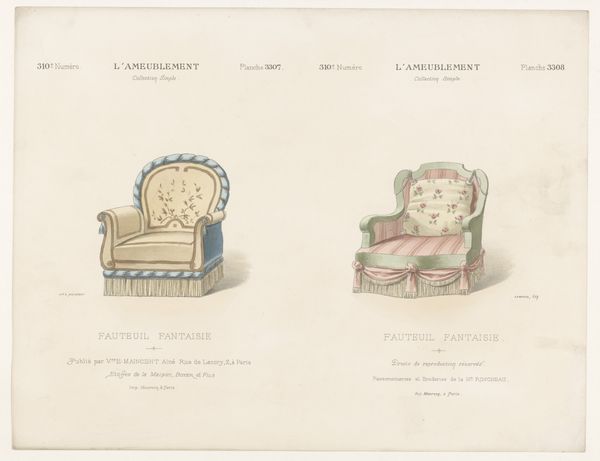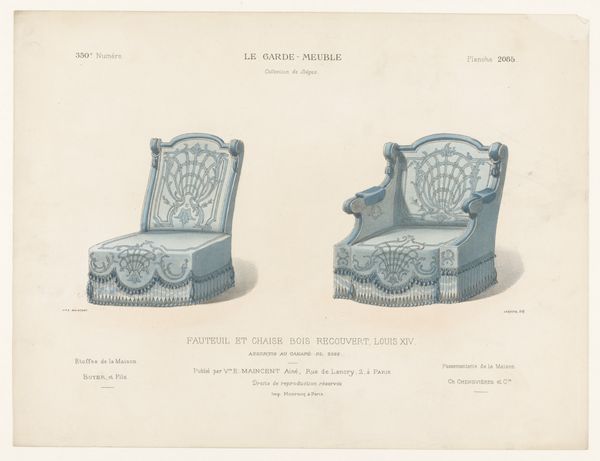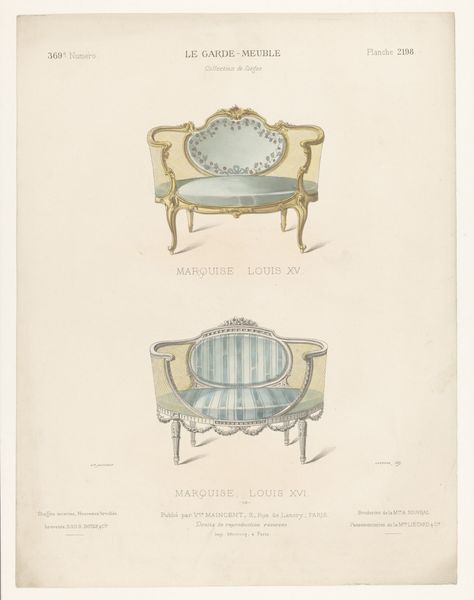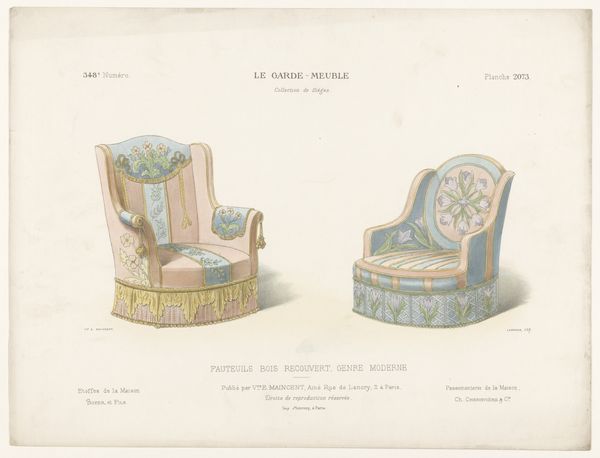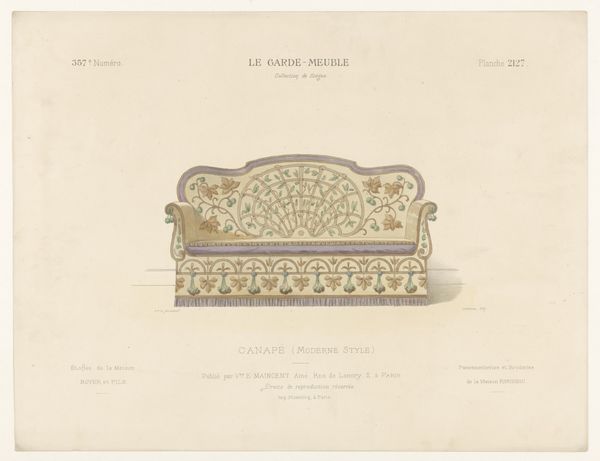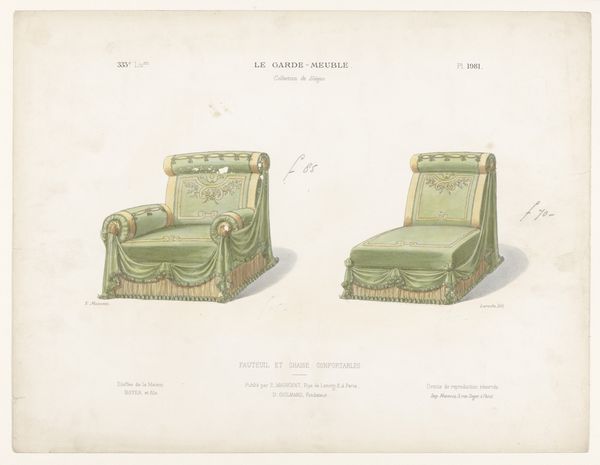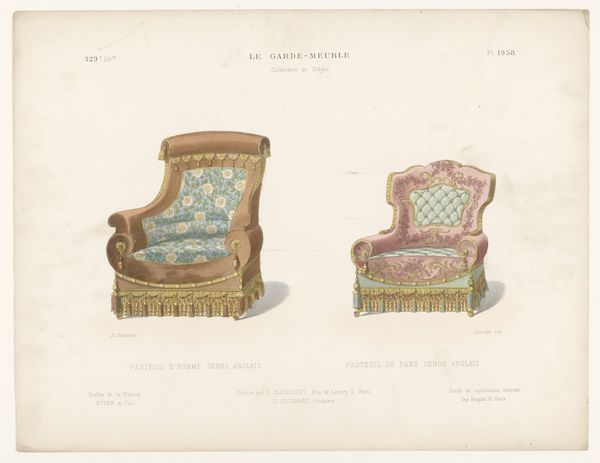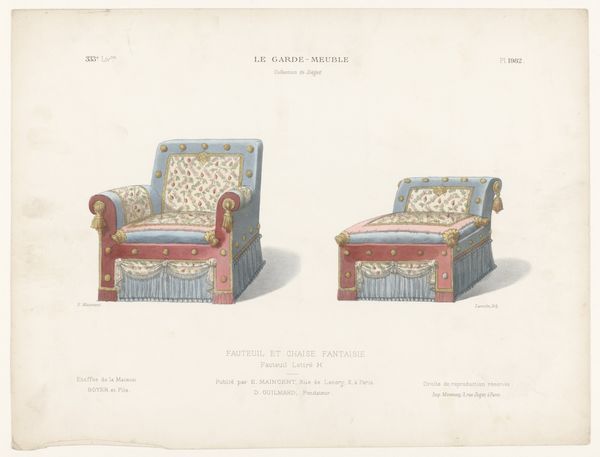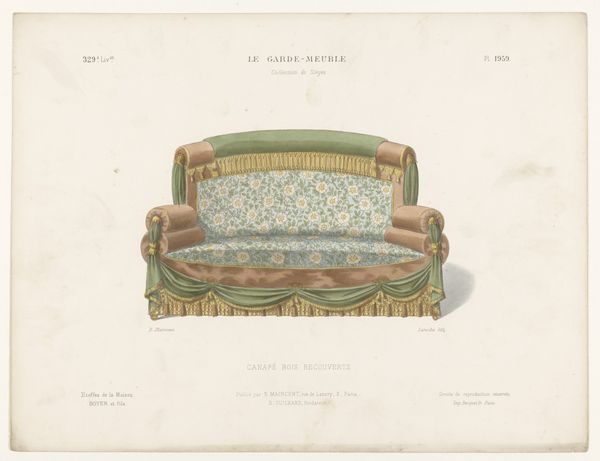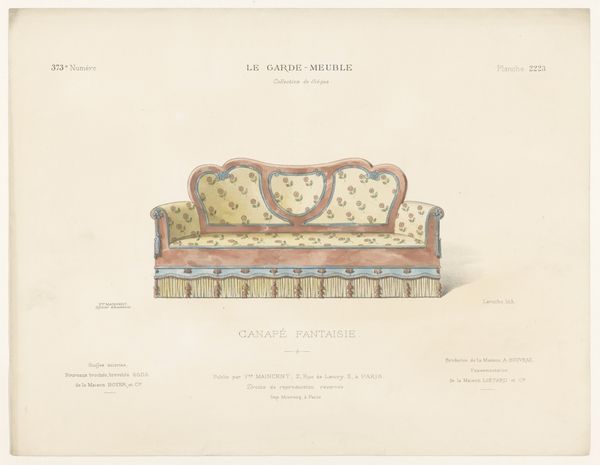
drawing, print
#
drawing
# print
#
academic-art
#
decorative-art
Dimensions: height 275 mm, width 358 mm
Copyright: Rijks Museum: Open Domain
Curator: These charming, fantastical armchairs are from a print titled "Twee fauteuils" or "Two Armchairs" by Léon Laroche, dating from sometime between 1895 and 1935. They’re rendered in delicate drawings and prints. Editor: My immediate sense is one of elaborate fantasy. There’s a dreamlike quality, almost like furniture from a fairy tale. They appear oddly top-heavy, perched on what looks like miniature, fringed stages. Curator: Notice how the floral and foliage patterns contribute to their air of luxurious comfort, practically evoking a sense of relaxation. Each detail carries its own resonance of a cultivated life, intended to communicate wealth and cultivated tastes. Editor: Wealth is evident. I can also detect the painstaking labor that went into producing this print – think about the individual strokes, the selection of inks, and, from a labor perspective, the craftsmanship displayed and expected at the time of design, execution, and ultimately, consumption. This wasn’t simply an artistic whim; the drawing was always destined for mass production. Curator: Absolutely. Consider too how each design plays with symmetry and balance, ideals so deeply ingrained in academic artistic traditions of the period. There’s a harmonious relationship between form and ornament, aiming at beauty and a certain degree of societal elevation. The flowers represent not just botanical elements but symbols of blossoming societal graces. Editor: I’m not entirely sure I agree. While “blossoming societal graces” may be present as a goal, the materials themselves dictate accessibility, and reveal other social dynamics – mass printing would reduce exclusivity while showcasing the technological abilities of its time, and the availability of design for an increasing middle class to imitate elite trends, at least aesthetically. Curator: That’s a solid point. Viewing it through a social lens really exposes these multiple functions! It acts simultaneously as aspirational guide and industrial record. Editor: Yes! A complicated web of aesthetics and manufacturing processes are encoded. It all helps unravel social values reflected in, and molded by, these decorative forms.
Comments
No comments
Be the first to comment and join the conversation on the ultimate creative platform.
